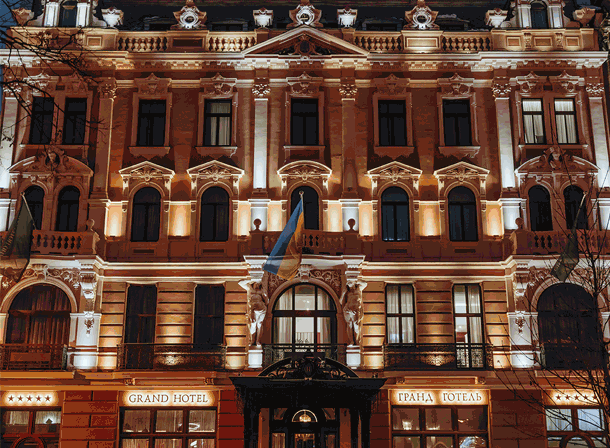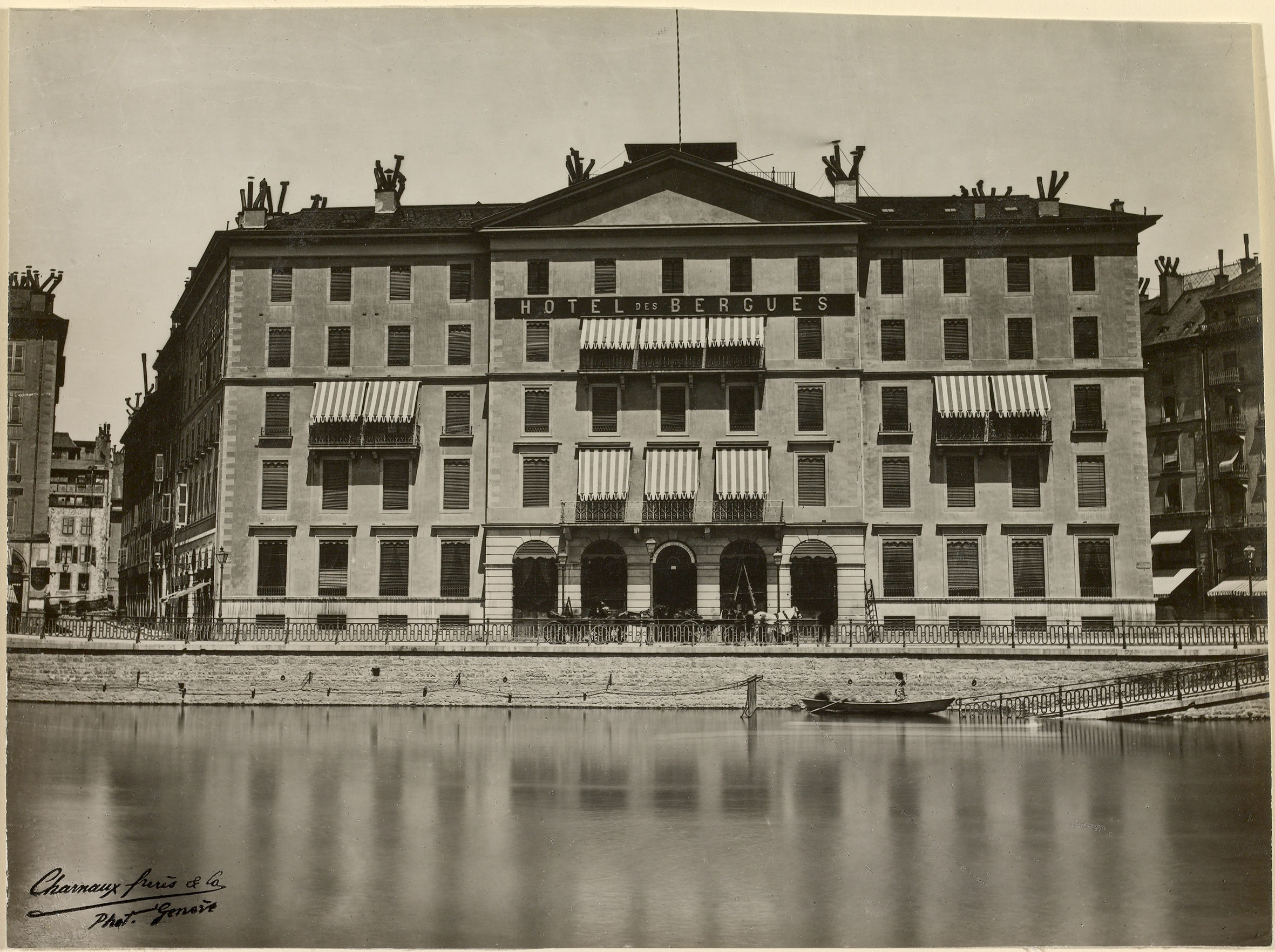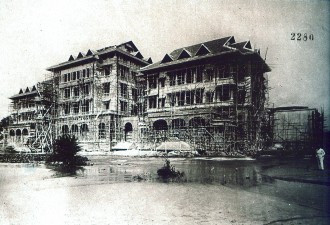The Imperial – New Delhi, India (English)

Author
Andreas Augustin
Pages
160
Photographs
Illustrations
180 historic and contemporary photographs, maps and illustrations
Leather-bound edition
Yes
Binding
Hardcover (real cloth bound / gold stamping / dust jacket)
ISBN
3-900692-17-3
Size/Weight
160 x 235 mm, 720 g
Also available in
French
Related Hotel
Price: € 43.00
Add to cartWhen a leading Indian builder of New Delhi and an ambitious British socialite cross paths, the outcome is The Imperial, a hotel embodying the confluence of cultures. This book chronicles the journey from King George V's 1911 declaration making Delhi India's capital to the twilight of British rule. It details how Lady Willingdon persuaded Narain Singh, the renowned builder, to create a magnificent hotel. Opening in 1936, The Imperial became a stage for grand colonial events and a sanctuary for Indian nationalists seeking independence. Figures like Pandit Nehru and Muhammad Jinnah strategized within its walls, shaping the subcontinent's destiny. The hotel evolved into a social epicenter, attracting Delhi's elite, Bollywood stars, international travelers, and business moguls. Its museum-like allure makes it India's most coveted hotel. This narrative introduces its illustrious guests, dedicated staff, and historic moments—from Pakistan's birth in the Royal Ballroom to the legendary Tavern's heyday. Exploring The Imperial's legacy, the book unveils its continuing journey as a beacon of the 'Imperial experience'.
1.
There's a unique charm in feeling 'at home' in a hotel, much like the awe one feels before a museum masterpiece. Ever imagined staying in a museum? Welcome to The Imperial in New Delhi. Here, my fellow alumnus from Klessheim Hotel Management College, Jasdev Singh Akoi, envisioned a fusion of a luxury hotel with a mesmerizing museum, showcasing over 4,000 pieces of Indian art. This ambitious undertaking required Jasdev to navigate the hotel from dire straits to the forefront of Asian hospitality. It was a Herculean task, demanding seven-day weeks and 18-hour days. His wife Mira, the creative force behind the design, and loyal employees like housekeeper Mrs. Sandhu and carpenter Ratti Ram, played pivotal roles. Despite challenges, Jasdev successfully negotiated with stringent labour unions, halving a 1,200-strong workforce, and secured funds for essential renovations. He scoured the hills for British-era artefacts to adorn the Garden Party coffee shop, elevated room rates for further refurbishments, and ultimately, the Akois' extensive renovations culminated in the creation of The Spice Route and the revival of The Tavern. Their private art collection adorned the hotel, transforming The Imperial into a majestic beacon in Indian hospitality.
2.
One tranquil Sunday morning, I indulged in an early tea before embarking on a guided tour of The Imperial's vast collection of antiques, paintings, and prints, led by the adept arts manager, O.S. Chowdhary. After three hours, I had explored just a fraction of the treasures and retreated downstairs for brunch. My favourite spot is the terrace, where I observed eagles elegantly soaring above the hotel's lawns. By noon, they descended closer, eyeing the rooftop, vigilant for a chance to swoop down on an unsuspecting sandwich. As I perused 'Brunch' in The Hindustan Times, it affirmed my choice: The Imperial's brunch is a culinary highlight, praised by renowned editor and food columnist Vir Sanghvi. The hotel's accolades included 'hotel of the year', San Gimignano as 'Italian restaurant of the year', and a celebrated wine list. My thoughts drifted back to a time when this land was barren, outside Delhi's old walls, back to when the capital was Calcutta. Let me guide you from that era to the moment Lady Willingdon reshaped Delhi's social scene, persuading Narain Singh to erect this hotel. Journey with me through India's independence to the present, where a vibrant, romantic, yet modern hub named The Imperial stands. Shall we begin this captivating exploration?
Andreas Augustin
The history of the Hotel Imperial brought Andreas Augustin back to this hotel which he had been visiting for almost 20 years. Happy personal memories were merged with professional research, carried out in India and internationally with devotion and attention to detail. Archives around the world became valuable sources, interviews with active and retired members of staff added stories and anecdotes to the growing collection of facts. With the help of the owning family and the management of the hotel finally the detailed puzzle of the history of New Delhi’s premiere hotel was completed. 
Famous for its strict Art Deco architecture, The Imperial was New Delhi’s first luxurious grand hotel.
The 'fastest turnaround in the hotel industry'
My personal Imperial saga had started about 20 years earlier. Back in those days, I remember the hotel being a dark and almost dilapidated site, but buzzing with business. It was the kind of place where backpackers mingled with elegant business travellers. A shaky Ambassador taxi transported me from the airport to the city. Nobody was there to greet me at the hotel. For the hotel staff, us guests were just a tiny distraction in their daily routine of watching the time pass between morning and the moment they went home. 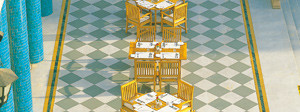 The terrace became the place to be
The terrace became the place to be
Two decades is a long time, however.
When I came back to The Imperial, a member of the front office staff welcomed me at the airport terminal; cooling towels were handed out before the new Mercedes-S class took off. The Sikh doormen traditionally guarding the hotel opened the door of the limousine and greeted me with a friendly "Welcome to The Imperial!" Smartly attired bell-girls pushed the inner doors open. Elegant staff in stylish uniforms courtesy of designer Raghavendra Rathore glided hurriedly through the brightly lit house like ghosts in a Harry Potter movie. The corridors were adorned with thousands of pieces of art.
What had happened? Researching the history of the hotel, I had to go back to the day when New Delhi was declared the capital of India. That was the year 1911. Slowly I worked my way up to the day the hotel came into being. That was between 1934-1936.
The Singh family had built it, but rented it out to the Oberoi family, who ran the place. Many years passed. The nation of Pakistan was founded at the hotel in the wake of World War II. 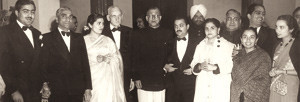

With the help of local picture scouts we unearthed wonderful photographs from the heydays of the hotel. Nehru (centre) held important political meetings at the hotel.
In the 1980s a member of the owning family took the helm of The Imperial: Jasdev Singh Akoi. It was upon him to undertake the monumental task of renovating a hotel described thus by Michel de Grèce: '… in Delhi the travellers will go to The Imperial. The red upholstery is still threadbare to the point of decrepitude.
Most of the light bulbs are burned out, the lamps are delightfully bizarre. Likewise, the bellboys understand nothing at all, yet their philosophical air is irresistible.'
Jasdev Singh Akoi took his place in the driving seat of the company, just as easily as he slides into his splendid Jaguar Mark III, 1953 model. With his natural sense for elegance and speed he became the long missing visionary leader of the good old Imperial. With the help of his wife Mira he worked seven days a week, 18 hours a day. Wing after wing of The Imperial was renovated. No part of the hotel could be closed as the income was needed to pay for the work. Temporary lobbies had to be created, and electricity transformers had to be moved without being turned off.  Jasdev Singh Akoi, his wife Mira and their son Gobind, the new man at the helm of the Imperial.
Jasdev Singh Akoi, his wife Mira and their son Gobind, the new man at the helm of the Imperial.
There was still very much of the 'old' in The Imperial. The Los Angeles Times correspondent John-Thor Dahlburg wrote in October 1994: 'Take the narrow six passenger elevator, said to be Delhi's oldest, up to the rooms and you may feel as if you've been whisked back to the twilight of the British Empire. The Imperial has added a new wing but, realising that its history gives the building a character no other Delhi hotel can match, room rates have been revised so that the guests pay more to stay in the old wing, along with the ghosts of Nehru and Jinnah.' Meanwhile, Jasdev Singh Akoi had begun to collect art and antiques, buying from the palaces, collecting some 5,000 pieces of art. Singh Akoi decided to combine hotel and museum in one.

Artwork needs space. A new floor was added, the number of rooms increased by 57 units. In 1997 he proudly invited guests to the first opening of his 'Great Exhibition of Imperial Art' at the hotel. His masterpiece was still to come. 
Building it and living the experience (below): The Spice Route 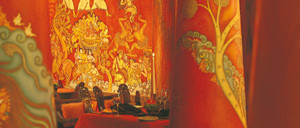
The Atrium had been designed by Hong Kong based Indian architect Chandu Chhada. Now designer Rajeev Sethi, the celebrated cultural tsar of India created the 'The Spice Route'. Never before had a restaurant in India such a feed-back. Acclaim came from all over the world. A correspondent of the New York Times wondered: 'I cannot recall a time, during my 20-odd years of writing about restaurants when I recommended a restaurant for its decor.' Here, in October 1998, a star was born. A confident Thai lady with the sweet-sounding name Veena Arora became the chef of The Spice Route, the first female chef of a restaurant of note in India. Part of her success is a collection of home cooking recipes. 'From my mum,' she confesses.  The Royal Ballroom. Here the charismatic Muslim leader Jinnah founded Pakistan. The Next Generation: Gobind Akoi, the son of Jas Singh Akoi, became the new executive director of the hotel in 2001. His father elegantly stepped aside and handed his dream, his vision over to his son. Gobind Akoi was at Cornell himself, had worked in the USA and knew that he needed a professional team to run The Imperial. He found Rishi Kapoor, who took over the part of strategic planning. Soon The Imperial was the first hotel in India to install Fidelio, a hotel operating software. The Italian restaurant 'San Gimignano' became an other India's sensation. In 2002 Frenchman Pierre Jochem became the first foreigner at the helm of The Imperial since the 1950s. He was an ex-general manager of The Pierre in New York (in addition to other leading Asian hotels). Pierre's persistence often needed a good portion of sense of humour: 'When I made my first rounds through the 285 rooms hotel,' he recalls, 'I heard an old, rattling vacuum cleaner at work. I said: That's a fairly old model; and the maid said. Yes, indeed, but it doesn't matter, when it breaks down we have a second one. On the first of January we start to vacuum the hotel on one side, at the end of the year we finish at the other.' Today Jochem laughs about this: 'The next morning we bought 50 vacuum cleaners. It took me four months to make sure that every room was vacuumed every day.
The Royal Ballroom. Here the charismatic Muslim leader Jinnah founded Pakistan. The Next Generation: Gobind Akoi, the son of Jas Singh Akoi, became the new executive director of the hotel in 2001. His father elegantly stepped aside and handed his dream, his vision over to his son. Gobind Akoi was at Cornell himself, had worked in the USA and knew that he needed a professional team to run The Imperial. He found Rishi Kapoor, who took over the part of strategic planning. Soon The Imperial was the first hotel in India to install Fidelio, a hotel operating software. The Italian restaurant 'San Gimignano' became an other India's sensation. In 2002 Frenchman Pierre Jochem became the first foreigner at the helm of The Imperial since the 1950s. He was an ex-general manager of The Pierre in New York (in addition to other leading Asian hotels). Pierre's persistence often needed a good portion of sense of humour: 'When I made my first rounds through the 285 rooms hotel,' he recalls, 'I heard an old, rattling vacuum cleaner at work. I said: That's a fairly old model; and the maid said. Yes, indeed, but it doesn't matter, when it breaks down we have a second one. On the first of January we start to vacuum the hotel on one side, at the end of the year we finish at the other.' Today Jochem laughs about this: 'The next morning we bought 50 vacuum cleaners. It took me four months to make sure that every room was vacuumed every day.
 Designer uniforms for all staff were ordered.
Designer uniforms for all staff were ordered.
The Imperial became the first hotel in India to hire music designer Marc Barrott to create special moods in different sections of the hotel. In the kitchen leading European chefs motivated their Indian colleagues. A French pâtissier created delightful little 'sins'. Flower arrangements all over the hotel were inspired by Strasbourg florist Groll. The housekeepers of competing hotels were seen once a week to copy the set up. Chic wooden furniture was placed on the lush lawns in front of the terrace. A high-speed Internet connection was laid into every room, with WIFI on all floors.
Today 21 Art Deco at 660sq.ft (61sqm) offer bathroom linen and duvets from Porthault of France, Bang and Olufsen TV sets, marble from Italy, sanitary fixtures from USA, Italy and Singapore, Burmese teak wood floors, French wood furniture and Italian glassware. These and all the other name-suites are among the grandest in the country, providing a home away from home to Her Majesty, the Queen of the Netherlands or Sir Richard Branson, who arrived on Virgin wings with 140 of his closest friends in tow.
Commercial success followed. By 2003 the hotel defended the second highest room rate in the country. The Imperial's turn-around became a synonym of economic success, its management considered one of the most disciplined and professional of all Indian companies. The company is a reflection of the changing times in India: 'My team is one of the youngest in any hotel in India – new thoughts, new ideas, new energy,' says Gobind Akoi, full of pride. Photographers arrived from all over the world to shoot the hotel. New York Times columnist Mark Bittmann recommended The Spice Route to his readers. More and more magazines published articles about the magnitude of The Imperial's Art collection. The Museum Hotel concept was born. What Jas Singh Akoi had conceived had become a triumphant reality.
 The Imperial's symmetric design originally encouraged the idea to have the main entrance from the terrace, but in fact the entrance was always from the side to retain the serene setting of the tranquil lawns in front of the hotel.
The Imperial's symmetric design originally encouraged the idea to have the main entrance from the terrace, but in fact the entrance was always from the side to retain the serene setting of the tranquil lawns in front of the hotel.
From a sleeping legend The Imperial turned into one of the most famous hotels in the world. The news of the success of The Imperial travelled so far, that a leading American university entertained a case study on the 'fastest turnaround in the hotel industry'. What went missing in most studies and stories I read was the human factor and the humble fact that many people working in this hotel have been here for over 30 years. While other hotels have closed their doors and released all old staff to reopen years later with a shining new interior and brand new software called employees, The Imperial has held on to its home-grown staff. And the old staff has joined the new management team (with German quality driven resident manager Martin Kleinmann) in the turnaround of the century.
Back to the beginning of the story: when I arrived in Delhi after ten years of absence, I gasped at the new splendour of the good old Imperial. The question if I would like to write the history of the hotel was rhetorical. Of course, I wanted to do it. It was in fact an honour.
ANDREAS AUGUSTIN
presents
The Imperial New Delhi
as part of the series
THE MOST FAMOUS HOTELS IN THE WORLD
The author and the organisation THE MOST FAMOUS HOTELS IN THE WORLD would like to give special thanks to Jasdev Singh Akoi for keeping The Imperial legend alive and for adding the exemplary museum concept, and to his son Gobind Akoi for giving it the spin of the 21st century.
We would also like to thank Pierre Jochem, vice president and general manager and his ‘right hand’, Martin Kleinmann. Our deepest gratitude to the department of public relations for its valuable assistance, thanks to L. Aruna Dhir; and last but not least to Rishi Kapoor for his strategic planning.
Also thanks to (in loose order) B.K. Joshi, Prashant Yadav, Ravinder Singh, Bruno Cerdan, Veena Arora, Munish Kumar, Subash Goyal, Dorene Liedel, Birgit Løitegaard, Inder Sharma, Jill Gocher, Rosemary Hedges, Peter Gautschi and Stephen Vincent Fernandez.
Our heartfelt gratitude goes to O.S. Chowdhary, The Imperial’s manager of art & antiquity, who so competently devoted himself to this project. Radhika Singh must be mentioned for bringing the history of the hotel’s 1960s in old photographs to life. Vikram Madhok and Reshmi R. Dasgupta for their memories.
Assistant in historical research: Thomas Cane
Photography: Deepak Budhiraja, Frank Meltzer, Jacob Termansen, Titouan Lamazou, Joplin Sinclair.
Further photographic material: Rajat Dilwali / Kinsey Brothers New Delhi, O.S. Chowdhary / The Imperial Art Collection, Famous Hotels Main Archives, Vienna; Imperial War Museum, London; The British Library; Archives d’Outre-mer, Aix-en-Provence; Diplomatic Archives Quai d’Orsay, Paris.
Editor: Carola Augustin and Thomas Cane.
The entire work including its cover, enclosed postcards and bookmarks is subject to copyright laws. No part of this book may be reproduced or transmitted in any form or by any means, electronic or mechanical, or by any information storage and retrieval system. Any reproduction of any part of this book without express written permission from THE MOST FAMOUS HOTELS IN THE WORLD will be prosecuted without exception.
Important Note for Publishers and Authors
All photographic material used in this book can be obtained as digital files of the highest quality. Please contact the Archives of famoushotels.org and request the best possible photographic material for your own publications. We would be delighted to be of help.
© 2005–2006 THE MOST FAMOUS HOTELS IN THE WORLD

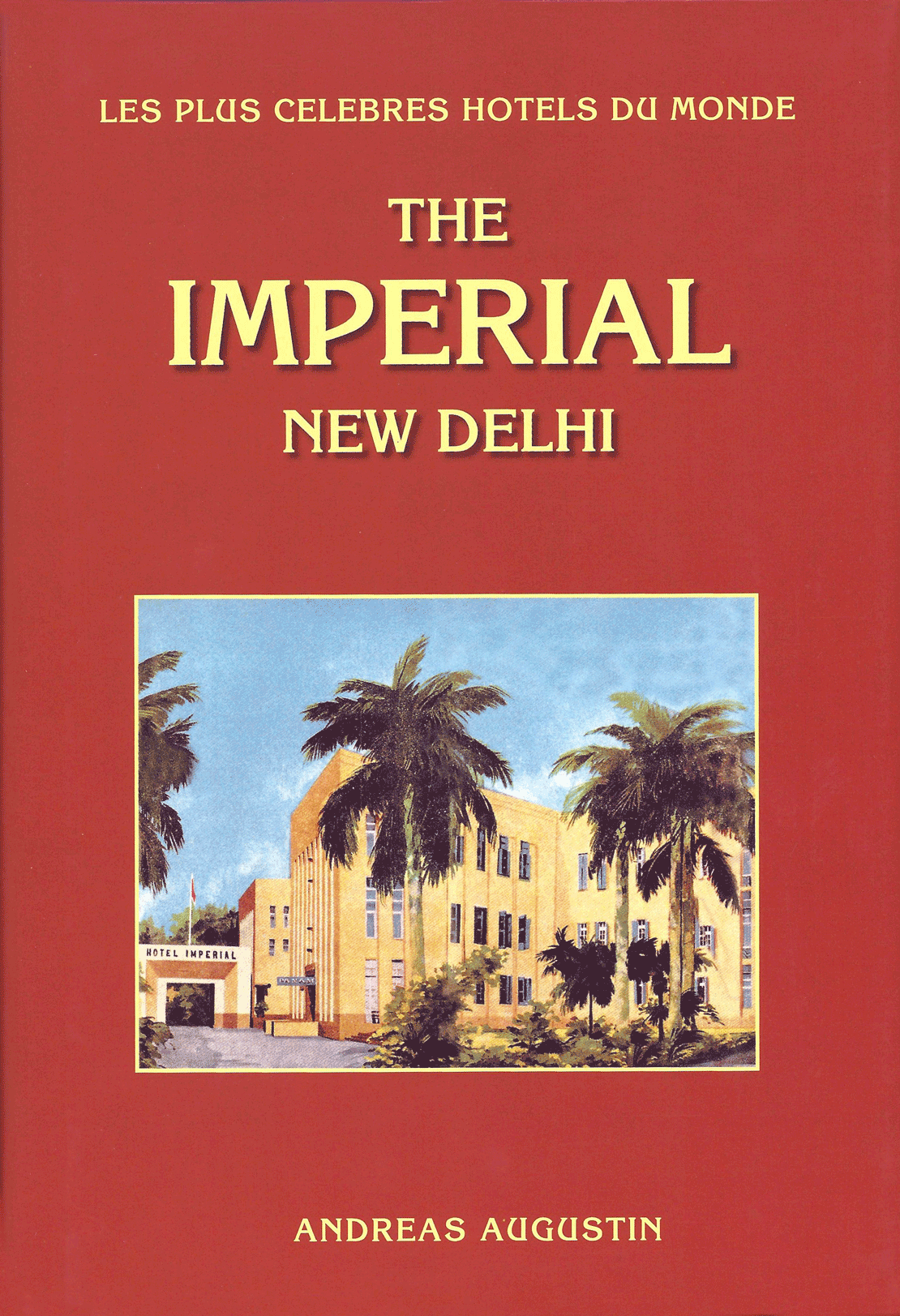
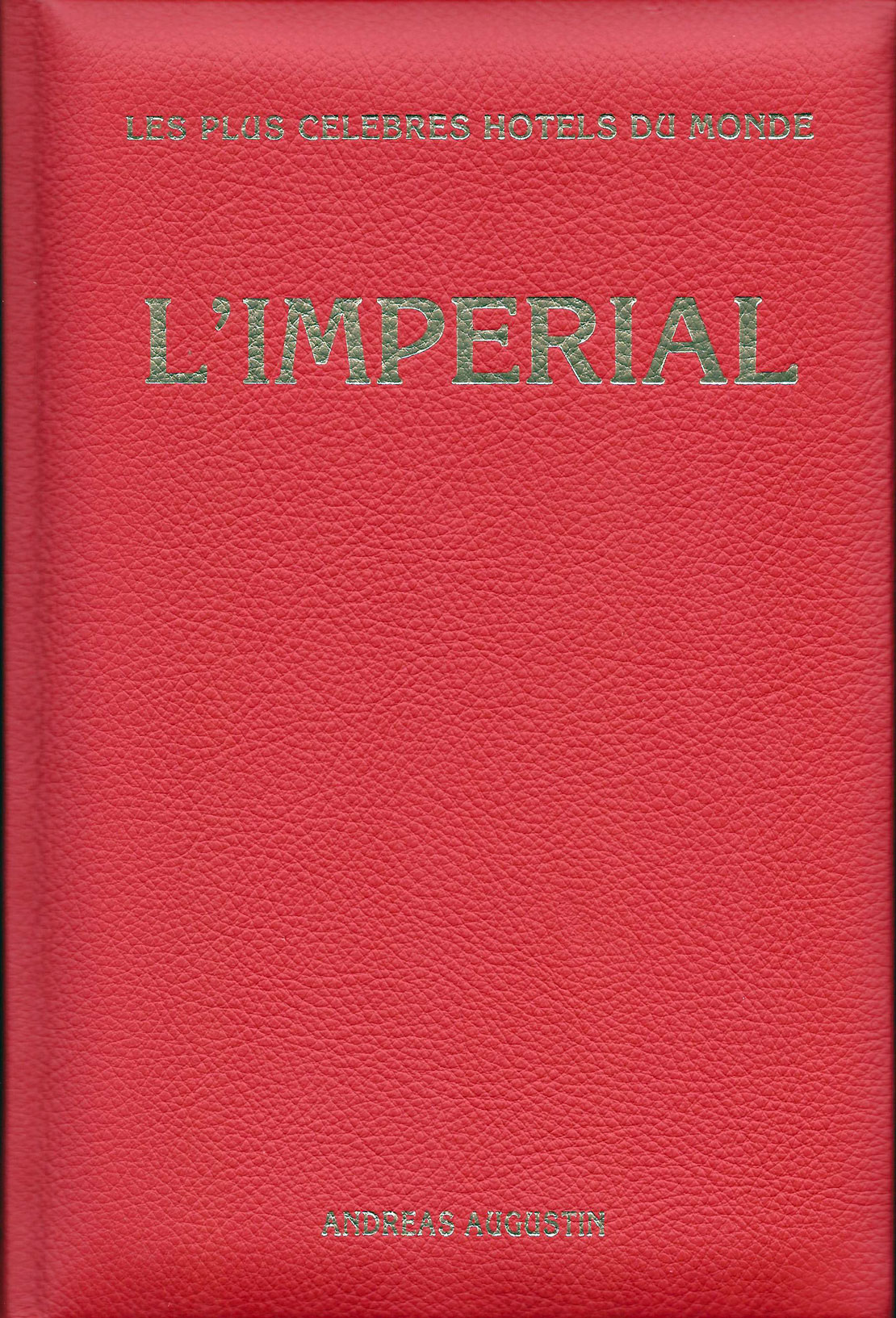

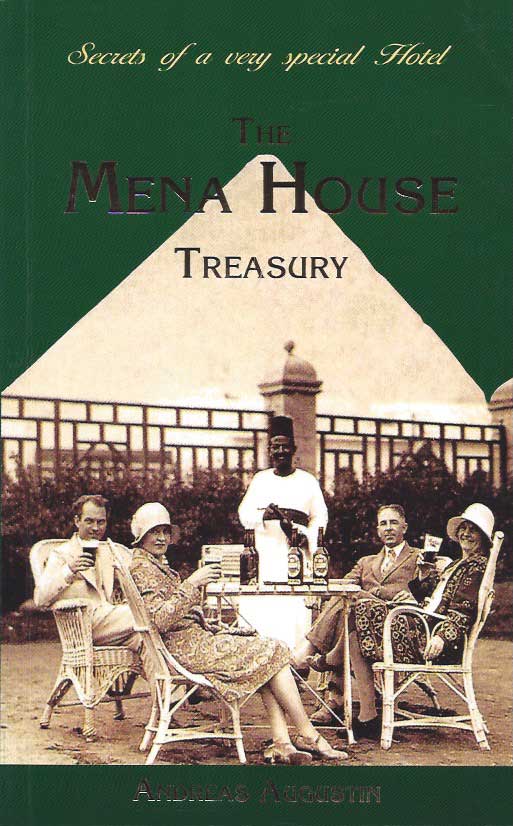
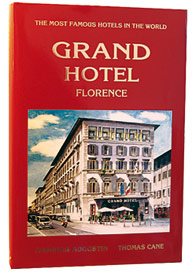

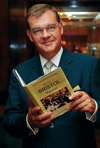
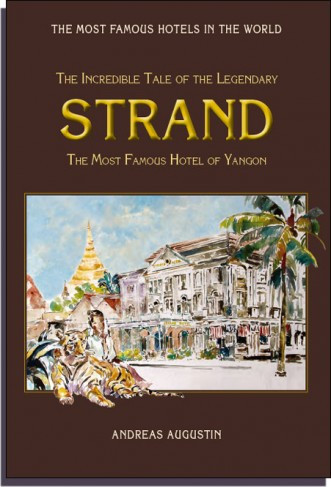 Upon request, we dispatch all our books personally autographed (as you know).
Upon request, we dispatch all our books personally autographed (as you know).
